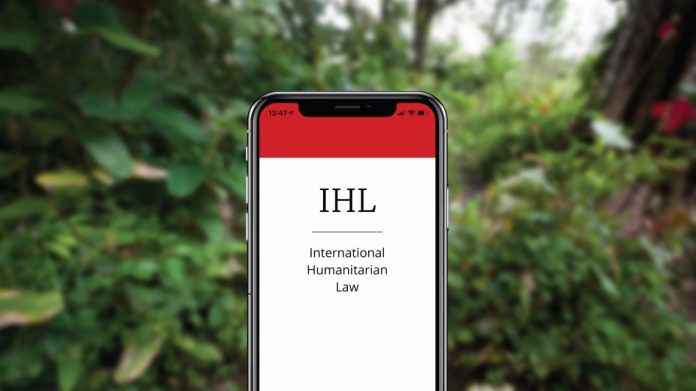This article is written by Shivali Srivastava from National Law University Odisha and edited by Gitika Jain. In this article, I have analysed the scope of the International Humanitarian Law as well as it’s loopholes and it’s inadequacy.
Table of Contents
Introduction
The way jus bello is associated in today’s world, international humanitarian law is likewise suffused with a similar yet unique sense of history. It is often associated and finds its identity in a storied record of warfare codes that traverse the different eras and particular periods often by the international humanitarian lawyers. Long story short, they particularly try to exemplify the influence of Henry Dunant and his instrumentality in finding the International Committee of Red Cross (ICRC) after he spectated the battle of Solferino. This instigated in him the desire to create the Red Cross Foundation and as one thing led the other, it finally resulted in the formation of the Geneva Conventions.
The ICRC, which in its guardian and promoter capacity is assumed to have a unique relationship with international humanitarian law defines it as follows:
International humanitarian law is an integral part of international law governing relations between states. This seeks to protect people who are not or are no longer active in hostilities, the weak and the injured, detainees and inhabitants and to establish certain legal rights and responsibilities of the opposing parties in the laws of war.
International humanitarian law at the starting of the 21st Century
The international humanitarian law had received its outline in the 1970s. Till then it had received its historical inception and the fundamental ideas it represented in the Diplomatic Conference on the Reaffirmation and Development of International Humanitarian Law Applicable in Armed Conflicts. However, its dogmas were questioned and scrutinised even after its inception and the conference, which was meant to find the middle ground for all the countries, had become a place of conflict. The recommendations by the ICRC and its experts were not taken in good spirits by a lot of the countries.
It became an unceasing discussion on the Additional Protocol I and II on the issue of external and internal armed conflicts respectively. Eventually, governments were unsure about the Protocol I which they felt was lopsided favouring the civilians to a greater extent. Thus it created a sense of ambiguity about the position of ‘International Humanitarian Law’ in the late 1990s. In the late 1990s, however, this confusion had been replaced by the recognition of Additional Protocol I as customary international law, and universal acceptance of International Humanitarian Law’s universal principles. At the beginning of the 21st century, the right view, the correct interpretation of us in Bello was that it was a purely universal humanitarian law, legislation under which humanity interests trumped military need.
Inadequacy of the pre-existing rules of humanitarian laws
In military conflicts, the major threat posed by misinformation campaigns is not a novel issue. Renowned Cyber Warfare experts identify this activity as ‘Netwar,’ the process of ‘trying to interrupt, harm or change what the targeted group ‘knows’ or feels they know.’ The principles of international humanitarian law do not tackle Netwars explicitly. Notably, the Article 36 as stated in Additional Protocol I of the Geneva Convention provides for the contemporary interpretation of military conflict rules, by demanding compliance with existing IHL concepts of ‘modern’ methods of warfare. The scope of implementation of IHL is dependent on the geographical restrictions as it controls and limits military actions to territories which are disputed in nature and are conflicting.
Violence against women during or after wartime is pervasive, mostly systemic, multi-faceted, and hideous. Stats come from all over the world, and from a number of outlets. In times of dispute, it should not be forgotten that women face harm under the possession of a large number of perpetrators which can either be a private or a public person. Invading military personnel can murder and rape. Militant groups that abduct women and force them into combat are a lot active during wartime. Discrimination against women can work in any or more of the following ways:
(1) as an infringement per se.
(2) as a cause of conflict violations.
(3) as a factor compounding conflict violations.
(4) as an obstacle to appropriate remedies for abuses.
In addition, the most prominent ones in non-international armed combat, the type of conventional rules regulating warfare means and methods provided far less security, keeping women at heightened risk.
Application of the humanitarian laws in situations apart from armed conflicts
After the advent of the Second World War, the leaders of different international groups met in Geneva to chalk out rules and regulations which would be directed towards avoiding a future recurrence of the massacres committed during the war. The Geneva Convention consequently was adopted which in turn codified the current war law into four separate conventions, which also contained significant changes such as providing civilians equal protection to all war victims, and instituted a standard of humanitarian laws to be enforced during internal conflicts thereby obtaining a huge victory for humanity.
The extent to which the humanitarian laws can be applied especially in non-armed conflicts
The first question at hand is to ascertain what circumstances are deemed to be “armed conflicts” and to fall within the scope of applicability of the governing norms. Among the most controversial issues at the 1949 Diplomatic Conference for the drafting of the Geneva Conventions was concisely the extent of applicability of Article 3 pertaining to non-international military operations. Consequently, the Conference could not agree on an appropriate concept of internal conflict and agreed to leave the expression open to interpretations but to limit the implementation of the criteria set out in the Geneva Conventions on International Armed Conflict to internal strife to their core principles only.
The United States Security Council(UNSC) which is also the global responsible body for maintaining peace and security of the member countries and which has the competence, pursuant to Article 25 enshrined in the UN Charter, to issue binding resolutions to member states of the United Nations; should be granted with the discretion to decide on the nature of internal military combat, either falling within the framework of standard Article 3 or the framework of action of Additional Protocol II according to the extent of hostilities, thereby making it clear to the targeted country that it shall be held responsible internationally for its regard for and accordance with humanitarian law. This would definitely establish deterrence for violating the Law of Warfare because governments would have assurance beyond question that they would remain under the global community’s critiquing gaze as well as what action is required of them accordingly.
Important case laws
Croatia v Serbia
Croatia lodged an appeal against the Federal Republic of Yugoslavia (FRY) on 2 July 1999 ‘for violations of the Convention on the Prevention and Punishment of Genocide Crime.’ Croatia has used Article IX of the Geneva Convention as a justification for the jurisdiction of the Court. The Jury instead turned to the validity of the allegations presented by the parties. It noted that, under the provisions of the 1948 Convention, there are two constituent elements to the crime of genocide. First is the bodily aspect, including the actions committed (which are laid down in Article II and involve, inter alia, the execution of community members and causes significant physical or mental damage to the targeted group. The second being the mental aspect that is the intent to kill or destroy any particular part of the entire religious, ethnic group.
As far as Croatia’s views were concerned, the Court noted that the Croatian groups had carried out the acts prohibited under Article II in the subparagraphs (a) and (b). The ICJ concluded that in the lack of proof of a Serbian policy to eradicate indigenous Croatians the deliberate dimension, the dolus specialis, did not exist, nor could it draw any conclusion from the actions committed. On the reverse, the Court found that the actions performed by the Serbs were meant to forcibly displace the Croatians but not to annihilate them. Nevertheless, taking the view that it had not been identified that the actions represented a genocidal motive, the International Court of Justice(ICJ) found that Croatia had not shown genocide or other violations of the Convention. Accordingly, it dismissed the entire story.
Republic of Guinea v Democratic Republic of Congo(DRC)
In the year 1998, Guinea brought an application to initiate proceedings against the country Democratic Republic of Congo (DRC) on a controversy over “significant breaches of international law” apparently committed against the person of Ahmadou Diallo who happened to be a Guinean citizen. The Court found that in the case of Mr Diallo’s expulsion, the DRC had infringed the Article 13 of the International Covenant on Civil and Political Rights (lawfully residing in the country of expulsion) and Article 12 concisely under paragraph 4 of the African Charter on Human and Peoples’ Rights (expulsion of foreigners only to be rendered pursuant to a “law-specific decision”). The Court stated in the judgment that the DRC had breached Article 9(1) as well as (2) of the Covenant law(right to be told of reasons for arrest) and the Article 6 enshrined in the Charter of Africa(provisions banning unlawful detention and arrest).
The Court also determined that “the Democratic Republic of the Congo [was] obliged to make effective reparations to the Republic of Guinea in the form of compensation for the damaging impacts of breaches of international laws, including Mr Diallo’s illegal arrests, detentions and expulsion.
Failures of International Humanitarian Law encountered in practice
Although there are far too many concrete concerns to tackle, the Geneva Academy of International Humanitarian Law and Human Rights drafts a valuable guide for understanding the problems facing non-State groups and communities in abiding with International Humanitarian Law. While the external factors such as the positive and negative perspectives impact the way the International Humanitarian Laws are abided by, there is a plethora of state as well as non-state groups that affect leading to the violation of humanitarian laws. As it is apparent that the most crucial and the primary issue is the non-compliance of laws by a lot of non-state factors. But this problem is similar to the reality that non-state actors are not parties to the Treaties autonomously or willingly and conventions are bound by law. Rather, IHL, as supported by the countries surrounding it, is inclusive of definitions and provisions for NSAs in military conflict situations essentially since they are de facto parties to the issue.
For instance, the wars in the middle east like that in Afghanistan and Iran, show clearly the representation for violations of the warfare laws by State and non-State groups as a consequence of asymmetric battle. For the technically weak Iraqi side of insurgents, IHL violations offered ways of:
1) ensuring survival.
2) moving close enough to the enemy killing US soldiers.
Because non-state armed groups most frequently operate within inhabited areas, and while this is in and of itself a clear breach of IHL, the military rationale for bypassing the requisite legal measures to mitigate danger to civilians is only exacerbated.
Conclusion
International Humanitarian Law encourages all States and non-State parties to do their utmost to protect and maintain the lives, limbs and property of civilians and other non-combatants, while at the same time allowing opposing parties to commit acts of violence within certain limits. However, when those borders are transgressed, when war crimes offenders are not held accountable for their transgressions, there is a natural impulse to dismiss International Humanitarian Law as lacking any “true” normative force.
References
- http://www.scielo.org.co/scielo.php?script=sci_arttext&pid=S0041-90602015000100007#2
- https://digitalcollections.sit.edu/cgi/viewcontent.cgi?article=2643&context=isp_collection
LawSikho has created a telegram group for exchanging legal knowledge, referrals and various opportunities. You can click on this link and join:












